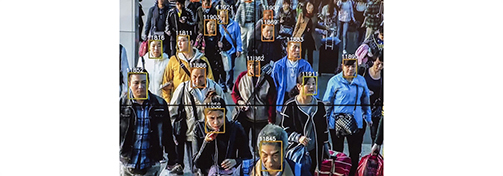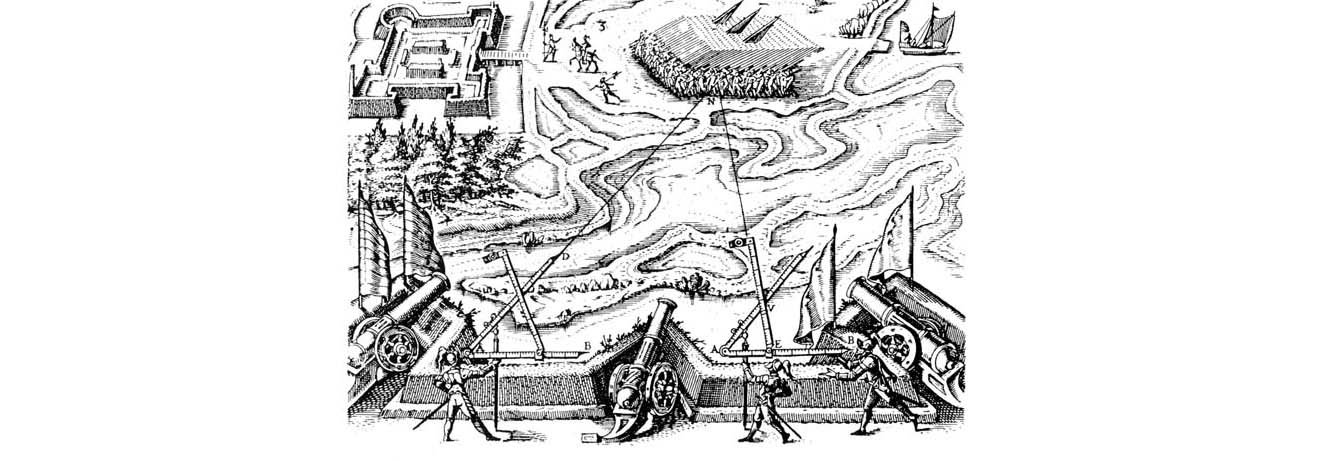The ironic nature of this concept is that real time is human subjective time. When we do not notice lags in communication, calculation, etc., we currently use the expression "in real time". But the reality of this time is simply a function of our motor habits, of the brief but real lags in our sensory systems, in our perceptions and neural activity.
Read Moretechnology
Surveillance

Computer profiles generate objects for surveillance - they instruct or train the observer in what to watch and how to watch for it. Police, psychiatrists, educators, physicians, to name just a few groups, increasingly use profile technology for early or pre-identification of various traits within preselected populations - if you match enough elements of the profile, you could become atarget, even before any trait has manifested itself. To prepare the observer, to train the observer to see, and in the last instance, to be the observer's eyes, this is the imaginary of the simulation of surveillance.
Read Moretech metaphor
For Proust railway travel was like a metaphor in that "it united two distant individualities of the world, took us from one name to another name" (quoted in Kern Culture of Time and Space. p.217) " Gertrude Stein speculated that the Cubists' breakup of the old way of seeing things was suggested by aerial vision, even though none of them had been up in a plane.
While Proust used technological analogies to illustrate his method of metaphor, the Futurists used technological metaphors to illustrate their method of analogy, which they called "Imagination without wires"
cinema: close up and quick cut
tech history
Lewis Mumford (following the Scottish sociologist Patrick Geddes) coined the terms eotechnology for the water-and-wood complex and paleotechnology for the coal and iron complex. (See Technics and Civilization, p.11)
Read Moretech philos
Alfred North Whitehead characterizes the scientific mentality as instinctively holding that all things great and small are conceivable as exemplifications of general principles which reign througout the natural order. He sees the alliance of science and technology as keeping learning in contact with irreducible and stubborn facts, and credits the Benedictine monasteries as providing much of this practical bent. (cf clock)
Read Moretechnology

Technology is usually understood as having a primarily practical concern with altering the world, while science has a cognitive concern with knowing it.(see tech philos) In this sense, technology is more a "knowing how" than a "knowing that." (following the distinction made by Gilbert Ryle.)
time and technology
"In its attempt to subdue time's flux by harnassing the future predictably and reliably to the present," technology " tends to 'domesticate' our experience of time." (L. C. Simpson, Technology, Time and the Conversations of Modernity, p.9) For Simpson, "Domestication appears as the will to control." (p.53) "In technology, time is destined to be reified, to be transformed into a commodity." (p.55) Simpson contrasts the time of technology to the time of praxis, which, like repetition, does not seek to annihilate or even domesticate time, but rather to come to terms with it. Other philosophers like Don Ihde and historians of technology like Lynn White, Jr. interpret technologies as embedded in praxis. (see clocks.)
Read MoreTitanic
Through radio communications, the sinking of the Titanic was rapidly known throughout the world. Ironically enough, the only ship within rescue distance had turned off its radio, and although seamen aboard the Californian saw flares, they were unable to convince their captain to go investigate. The Titanic symbolized both the strong, confident sense of the future and the concern that things were rushing much too fast.
Read Moretool
Henri Focillon describes the relationship between the hand and the tool as a human familiarity, whose harmony is composed of the subtlest give-and-take, not just a matter of habit. (The Life of Forms in Art, p109.) "Once the hand has need of this self-extension in matter, the tool itself becomes what the hand makes it. The tool is more than a machine. " The "exact meeting place" of form, matter, tool, and hand is the touch.
Read Moretransclusion
The idea of quoting without copying was called transclusion by the designers of Ted Nelson's Xanadu operating system. The most innovative commercial feature of the hypertext system was a royalty and copyright scheme for use without copying. Whenever an author wished to quote, he or she would use transclusion to " virtually include" a passage by pointing to the original. (This function operates like the "make alias" command on the macintosh. It is a pointer rather than a copy.) Literal copying would be forbidden in the Xanadu system. A fee could be charged for transclusion, every time an individual work was being read or quoted.
Read MoreVirtual Reality
VR is a simulation of embodied presence, based on a feedback loop between the user's sensory system (see proprioceptive ) and the cyberspace domain, using real-time interactions between physical and virtual bodies. It relies on the assumption that the senses function as they always have, even in the face of perceptual inputs that have been drastically altered. Yet one of the principal "allures" of virtual reality is its promise to leave the body, on what Elizabeth Grosz calls "somatophobia."
Read MoreWar
In foraging societies men go to war to get or keep women. Access to women is the limiting factor on male's reproductive success. The most common spoils of tribal warfare are women. Raiders kill the men, abduct the nubile women, gang-rape them, and allocate them as wives. Leaders may sometimes use rape as a terror tactic to attain other ends, but it is effective precisely because the soldiers are so eager to implement it. In fact, it often backfires by giving the defenders an incalculable incentive to fight on, and probably for that reason, more than out of compassion for enemy women, modern armies have outlawed rape. (Pinker, How the Mind Works, p. 513)
Read More